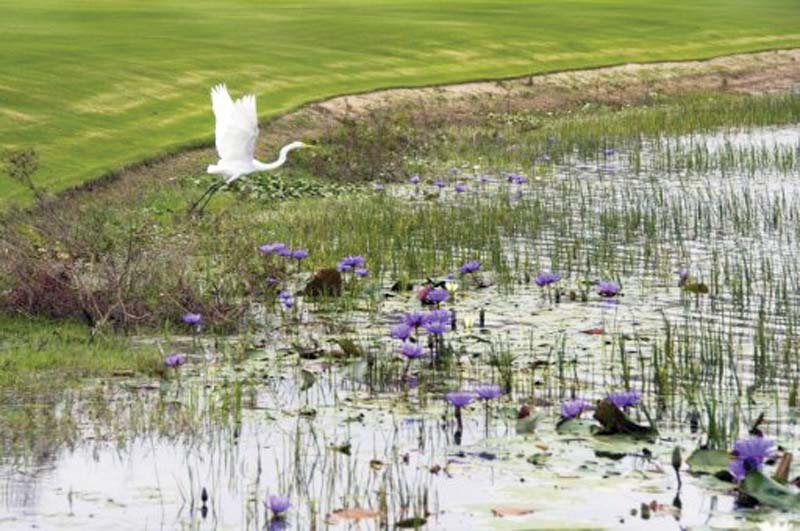
Beware also of the capybaras rodents, monkeys, three-toed sloths, burrowing owls and the occasional boa constrictor.
The wildlife will bare its teeth during the 72-hole men’s and women’s tournaments over the next two weeks.
There are signs in Rio to warn spectators and players to be cautious around the wild animals roaming the Olympic course, not least of which are the caimans.
PGA Championship: Walker struggles to accept ‘surreal’ win
Mark Johnson, the PGA Tour director of international agronomy and top greenskeeper at the Olympic course, is not too worried about the caiman living in the lakes near holes two, three, five and nine. They usually come out at night and are relatively timid.
Animal handlers will be on hand to deal with any species who decide to roam into the mix with some of the world’s top golfers and the following spectators. Any beast that is caught will be relocated into a nearby national park area.
The Gil Hanse-designed Olympic golf venue was created from the swampy Marapendi Lagoon, on ground where a sand-mining operation had degraded the landscape.
In pictures: Postcards from Rio
An estimated 263 animal species are in the area now, compared to 118 before the course was built. Native vegetation is up 167%, as chemicals could not be used to kill unwanted weeds or insects.
But water hazards could have a whole new meaning if a caiman comes wandering out of one at a crucial moment.
For the Olympic groundskeepers, the more daunting animals are the capybaras, the world’s largest rodents.
The dog-sized creatures will nibble on the meticulously trimmed grass and plod through sand traps as if they owned the place.
“They chew down on the grass at night,” said Johnson. “There are about 30 to 40 of them inside the course perimeter, but they live here. We play golf here. We co-exist.”
A variety of snakes include a few boa constrictors while the birds include sandpipers, vultures and egrets. Monkeys live in cashew trees near the 12th green.
Published in The Express Tribune, August 5th, 2016.
Like Sports on Facebook, follow @ETribuneSports on Twitter to stay informed and join in the conversation.









































COMMENTS
Comments are moderated and generally will be posted if they are on-topic and not abusive.
For more information, please see our Comments FAQ